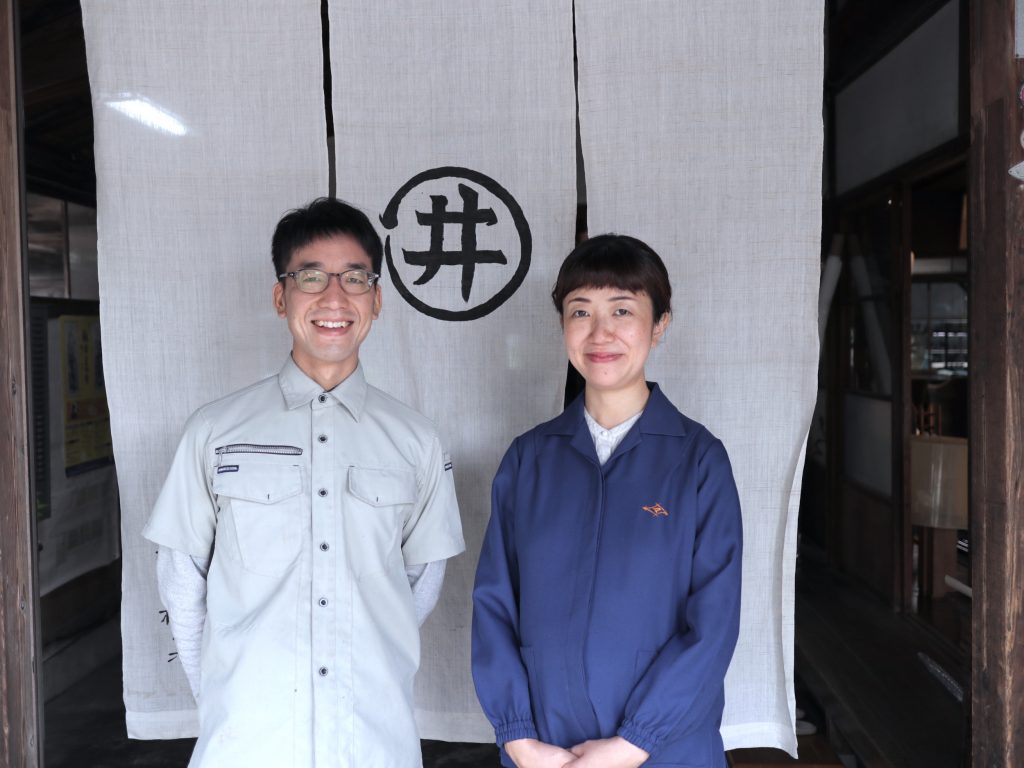Family Business Innovation Lab (NN Life Japan) Collaboration Japan Craft and Dutch Design for Sustainable Product Development

The Dutch life insurance company NN Life Japan is co-hosting the Family Business Innovation Lab to support the next generation of family businesses in Japan. Family Business Innovation Lab and JAPAN BRAND FESTIVAL have collaborated to establish the ‘Craftathon’ program, which supports overseas expansion of Japanese craftsmanship. Matsui Kigyo was selected as a participating company and given the opportunity to collaborate with the Dutch design company BCXSY.
Matsui Kigyo was founded in Toyama Prefecture in 1877. It is the only silk weaving company in Japan to have inherited 450 years of local silk tradition. BCXSY works with Japanese craftspeople, manufacturers, and brands from around the world to create artworks and products.
The two companies will produce a documentary while working on developing a product and installation that builds from the value of silk products and traces the history of sericulture in Japan. They will explore sericultural methods that build a new relationship with silkworms, strengthening the understanding of silk and sericulture.

Japanese Craft Meets Dutch Design

Matsui Kigyo Co. was established in Toyama Prefecture in 1877. The company has been weaving silk products such as interior goods and kimono fabrics using “Shike silk” made from silkworm cocoons. Noriko Matsui, the sixth generation of this family business, has launched a life-care brand called “JOHANAS”. This brand incorporates the comfort of natural silk with modern life products. She is also involved in ‘sericulture’ with her husband Wataru Matsui. This is the practice of cultivating soil and building a silk lifecycle.
Boaz Cohen and Sayaka Yamamoto are the founders and designers of the company BCXSY based in the Netherlands. They have worked with Japanese furniture craftspeople as well as manufacturers and brands from around the world, creating a variety of art works and products. Many of these collaborations have been with family businesses, where they incorporate free thinking and the latest technology into their designs, giving historic products new appeal.
The latest to collaborate with is the Matsui Silk Factory in Toyama.

Silkworms: ‘The Heavenly Insects that Produce Silk’
Silkworms construct cocoons that are the source of silk thread. Inside these cocoons, the silkworm transforms from their larva state through to a full-size worm.
To protect themselves during this process, the cocoon reflects light and harmful ultraviolet rays. Also, cocoons have a moisture regulating function, which reduces moisture and static electricity. This limits dust, which is a home for bacteria.
The ratio of amino acids that make up silkworm protein is almost the same as that of human skin, therefore it is used as surgical thread. Silkworm droppings are also rich in nutrients and have been used as medicine since ancient times. In these ways, silk has many functions to protect the silkworms, and it is a waste free material and a has very high affinity with people.
Matsui Kigyo has been manufacturing fusuma paper (interior door paper). This is made by laminating silk and Japanese paper. During the humid climate of the Hokuriku region in Japan, this type of fusuma paper with its unique characteristics of silk, has the function to reduce humidity and prevent mold. Its luster makes the room appear brighter even in dim light. In addition to the pure functionality of silk, there is also the energy of the silkworm that permeates the mind, such as the comfort of wearing silk and the feeling one has when it is used in an interior space.
Silkworms have coexisted with human beings from around 4,000 to 10,000 years ago. However, the information about this long relationship and culture that has been handed down, is limited. This gives us a somewhat old-fashioned impression.

Current Situation and Future Challenges of Silk
Until today, Japanese silk has been used in a variety of industries and functions, such as clothing, art, medical equipment, daily-to-day items, and interior decoration. However, the major use in Japan is for kimono fabric. With the sharp decline in demand for kimono, the production of silk fabrics has decreased by 70% in the last 10 years. The number of ‘sericultural’ farmers has decreased by 97% in the same period. This has put the survival of the industry at risk. Furthermore, with the increase of veganism around the world and silk manufacturing being yarn derived from animal products, the perception of silk is changing.

Taking the opportunity to collaborate through the Craftathon event, Matsui Kigyo and BCXSY have been discussing the possibility of finding a new way to make use of silk by focusing on the story of silk cultivation, production, and the creation of products using the silk. As well as the functional and emotional value of silk and delivering messages that match the thinking of modern people.
From this, they decided to work on the following:
To develop of a product and installation that expands of the value of silk products
To trace the history of sericulture in Japan and to explore sericulture methods that build a new relationship with silkworms
Through these efforts, they will make a documentary and present a new way of understanding silk and sericulture.
They said, “We believe that we will be able to create better products and propose new values through silk by collaborating with each other through repeated research and mutual collaboration, rather than just a short-term effort of adding BCXSY’s designs to Matsui Kigyo’s traditional techniques.
Watch this video from MONO MONTHLY Live Online Talk with Family Business Innovation Lab & Matsui Kigyo (JOHANAS) and get inspired.
Related links:
Family Business Innovation Lab (in Japanese only)
Matsui Kigyo Co.
BCXSY
This is a contribution article from MONO MONTHLY – Matsui Kigyo (JOHANAS)
